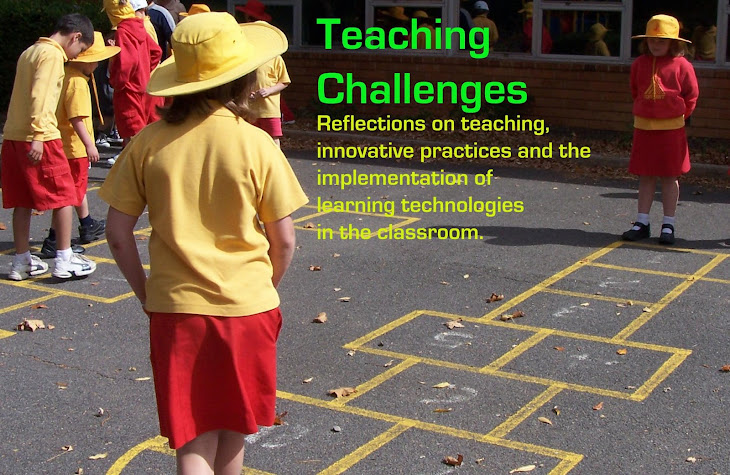Kids Can Coach
I've discovered a method to help teachers integrate ICT in the classroom, that takes some of the heat off the teachers themselves. I'm calling it "Kids Can Coach".
Here's how it works:
Planning: Teacher 1 and Teacher 2 (and even Teacher 3) agree on something that they would like students to learn to do with ICT - this might be new skills in a familiar app, or a brand new app.
Preparation: Teacher 1 learns to do this themselves, and has a practice.
Lesson 1: Teacher 1 teaches Class 1 with a demonstration and then supports students as they learn the new skills. Teacher 1 and Class 1 are now experts, and become the coaches for the next lesson.
Preparation: Explain to Class 1 what coaching looks like, and what is expected of coaches. Coaches are told "explain, don't do" and provided with a guide (success criteria) to ensure they cover all task requirements.
Lesson 2: The lesson is repeated with Class 2/3. Teacher 1 gives the instructions and demonstration, and Class 1 students are paired with Class 2/3 student/s to coach.
Results: All students have exposure to the new skills, and students from Class 1 have become experts. In future lesson series, the coaching class should be varied in order to allow all students to experience being the coach/expert.
Variations:
- Teachers 2/3 could also join in during Lesson 2 and learn alongside students.
- Cycle could be more along the lines of: Teacher 1 teaches Class 1, then Teacher 1 teaches Teacher 2 and Class 2 with Class 1 coaches, then Teacher 2 teaches Class 3 with Class 2 coaches.
Here's an example of how my Year 3 teaching team did this:
Planning: We decided we wanted students to learn how to retell a familiar story (with innovations) in a multimedia presentation using a drawing app (Sketchbook pro) and iMovie. I taught a
similar lesson to groups last year, so this was an extension of this idea. I was "Teacher 1" and my class was "Class 1" for this example.
Preparation: I created a Storyboard worksheet for students to use to plan out their story and images. I introduced the project and told students we would be retelling the story of the Three Little Pigs. (We did extensive work with innovating this story earlier in the year). Students did the written part of their Storyboard.
 |
| I demonstrated drawing and colouring in Sketchbook Pro |
Lesson 1: I demonstrated how to draw with Sketchbook Pro, including how to "crop" so that parts can be reused for additional pictures. Students got started with their images. As students started to get close to the iMovie stage, I stopped the class and brought them back together to explain how to export the images to Photo Library and then import to iMovie. I explained the key steps I wanted them to take when editing the video and adding audio. Students produced their movies with my support.
 |
I demonstrated how to crop pictures to add to another picture.
(See how the pigs are the same.) |
Preparation: I talked to my class about the coaching process, and made it very clear that when we coach with ICT we try to keep our hands back. This is because the other person will learn so much more by doing it themselves than by watching someone do it for them. I listed the success criteria for the finished movie and displayed it on the IWB in the room for Lesson 2 so that students could refer to it when determining if there movie was complete.
Lesson 2: We gathered together with the other two Year 3 classes. I demonstrated the basic steps and tips for the project and then students were let loose to create. I moved around the room and monitored how groups were going. Students were engaged in the task and I was pleased to see that the coaches were allowing the others to do the work. I think it helped that they had had the chance to work through the whole creative process themselves in the previous lesson. They could then appreciate that this was not their personal creative work, so they felt free to provide support instead.
Results: Not all students completed in the lesson time, however they were able to work on these further during consolidation time. Students were very excited to share their movies in the special Movie Session we had the following week. All students developed the skills for using the programs and teachers gained some of these skills as they saw the process and assisted students.
 |
| Students worked in a group of three, with one coach. |
 |
| This coach is trying REALLY hard not to touch the iPad! |













